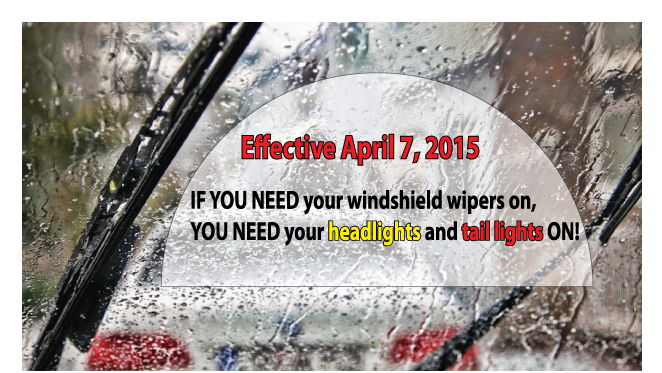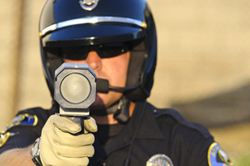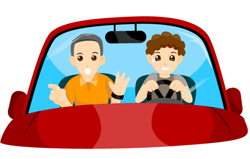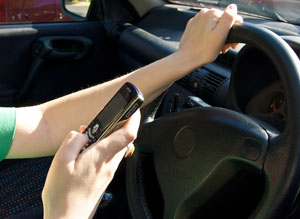Dan explains reasons to choose a local insurance agency
Text and Driving stories that have a huge impact
Here are some stories about distracted driving and what price we all pay for this bad habit.
“Warning these videos are disturbing.”
Here is a true story about Liz Marks texting and driving and how it changed her forever.
Slow motion video of a crash.
Distracted Teen drivers are the number one offenders.
OPEN YOUR EYES – DISTRACTED DRIVING PSA
Massachusetts law requiring headlights and tail lights to be on when raining or foggy

Effective April 7, 2015, a new MA law requires that you turn on your headlights and tail lights whenever you turn on your windshield wipers. The new law also requires YOU to use your headlights and tail lights when visibility is less than 500 feet. Failure to follow the new law could result in a ticket AND and insurance surcharge. So, please remember to Let Your Lights Shine….when it’s rainy or foggy.
Oh Deer, Tips for avoiding Deer Collisions.
Oh Deer, It’s That Time of Year Again in Massachusetts and Connecticut
 The arrival of the cooler weather marks the return of cozy sweaters, shorter days, pumpkin-flavored everything and – if you happen to live in Massachusetts or Connecticut – deer mating season. While a welcome sight in your backyard, packs of deer are a big concern on the road. If becoming one of over a million drivers who are involved in deer collisions every year isn’t on your wish list, now is a great time to take a refresher course on accident prevention. Below is a quick rundown of what you need to know to stay safe behind the wheel all season long.
The arrival of the cooler weather marks the return of cozy sweaters, shorter days, pumpkin-flavored everything and – if you happen to live in Massachusetts or Connecticut – deer mating season. While a welcome sight in your backyard, packs of deer are a big concern on the road. If becoming one of over a million drivers who are involved in deer collisions every year isn’t on your wish list, now is a great time to take a refresher course on accident prevention. Below is a quick rundown of what you need to know to stay safe behind the wheel all season long.
- Keep Your Eyes Open for More. Like most humans, deer love company. Frequently traveling in packs, their unpredictable numbers can instantly throw surprised drivers off track. If you spot a pair of antlers in the distance, assume that many more are hiding in the shadows.
- Check the Clock. Deer are especially active at sunrise and at dusk. That doesn’t mean you won’t see any earlier in the day or late at night, but that’s when you’re statistically the most likely to cross each other’s paths.
- Buckle Up. Hitting a deer is a serious business. To avoid life-threatening injuries, always wear your seatbelt, even if you’re just driving to the nearby grocery store. Since local back roads are quieter than highways, they’re more attractive to deer herds on the go, so it’s important to always be on alert no matter where you’re going.
- Find the Middle Ground. When you’re traveling on roads with multiple lanes, create an invisible buffer zone by merging into the middle lane. Because any stray deer will have to enter the roadway from one of the sides, driving in the center automatically gives you more time to react.
- Read the Road’s Sign Language. Now that deer mating season is about to be in full swing, paying attention to yellow diamond signs that designate common corridors for traveling deer is a safety must.
- Stay Calm and Collected. If you do see a deer, honk your horn and drop your speed as slowly as you can to avoid a collision with the driver behind you. Although swerving will probably be your first instinct, it can throw you off the road or right into the path of the fast-moving deer you were trying to avoid.
While following the tips above will decrease your chances of accidentally hitting a deer, they aren’t foolproof. Because collisions are sometimes unavoidable, you need to be prepared in case the unexpected happens. If you hit a deer, find a safe spot on the shoulder to assess the damage and call the police. As tempting as it can be to check on the deer, leave that job up to the pros. When hit, deer can become confused and aggressive, making the road conditions more dangerous for other drivers and putting you at risk for serious injuries.
Information about ride sharing and the risks you might be taking.
 Ride Sharing – A dangerous business activity you might want to be informed on.
Ride Sharing – A dangerous business activity you might want to be informed on.
Ridesharing is gaining in popularity because it is more convenient than calling a taxi. It also provides those with insured automobiles a way to earn some extra money. Before you decide that you would like to engage in this business activity, you might wish to inform yourself about some of the unpleasant things that are happening in this industry.
Who Can Participate in Ridesharing?
In order to participate in this venture, you must have automobile insurance, but it would be to your advantage to read the fine print first. Much of the most important coverage on your personal auto insurance policy is excluded while a vehicle is being used for “public or livery conveyance.”
A public or livery conveyance is when you use your vehicle to transport people in exchange for a fee or money. Whenever coverage is excluded, as with the “public or livery conveyance exclusion”, you will be personally liable for damages or injuries caused by you while in the process of performing your ride-share duties.
Does the Company Carry Liability Insurance?
Some ride-share companies provide excess liability insurance for their drivers. Uber is one of those companies. It carries a $1 million liability policy, in excess of, your own personal liability coverage. However, this does not mean that you will always be covered. If the right circumstances present themselves, you may be entirely on your own if you cause a collision. For example, collision coverage….the coverage that pays for damage to your own vehicle…..would not be covered under the ” public or livery conveyance exclusion”!!!
A Case in Point
Lyft and Sidecar
Another thing to beware of is how executives describe their companies. Some organizations like Lyft and Sidecar shy away from the “rideshare” label, but that is exactly what these companies are offering to their customers. Drivers and riders come together for a fee, so Lyft and Sidecar drivers are also susceptible to the public or livery conveyance exclusion even if their companies advertise their services as something different.
Parents, share this information with your students away from home. Share it with your friends, share it with anyone who you think might have reason to be informed.
Read More about how your policy might respond to Ride-Sharing Situations.
Extremely powerful video about seat belt safety.
This is the new “wear your seat belt” ad the UK is doing – started by some dude not hired to do it, but because the cause is important to him, he came up with this idea, and now it’s being hailed across the world as a “beautiful” commercial.
Some of the worst places for speeding tickets in New England
Police in some states frequently write speeding tickets and make it as hard as possible for motorists to avoid them. They also impose particularly large penalties. This is true of several states in New England; relatively low crime rates allow police to spend many hours catching speeders. They often target drivers from other states, so it’s crucial to avoid speeding if you visit this region.
particularly large penalties. This is true of several states in New England; relatively low crime rates allow police to spend many hours catching speeders. They often target drivers from other states, so it’s crucial to avoid speeding if you visit this region.
Although Massachusetts may not have the largest fines, the state’s court system makes it very difficult to appeal them. The filing fees required to contest a ticket often surpass the cost of accepting the fine, according to Yahoo Autos. Forbes reports that the minimum penalty in Massachusetts is only $50. However, exceeding the speed limit by 25 mph will cost you an extra $150.
Connecticut is known for using numerous unmarked cars. Most of the state police vehicles have few or no markings. This makes it difficult to identify them without a radar detector. Police in Connecticut often drive unmarked Ford and Chevy sports cars as well. Truck drivers try to warn each other about these vehicles; they are known as “plain wrappers” in CB lingo.
Local police regularly operate clever “speed traps” in the small towns of Vermont. These villages don’t have many businesses or residents to generate tax revenue, so they make up for it by writing plenty of tickets. Wilmington and Island Pond are two of the state’s major speed trap zones. Motorists in rural Vermont must remain vigilant by watching for unmarked cars and sudden changes in the speed limit.
New Hampshire demands unusually high speeding fines. If you speed in the Granite State, AOL indicates that you may face a penalty of up to $1,000 on your first offense. Drivers should use extra caution in southern New Hampshire; Nashua and Manchester are known for their speed traps. On the bright side, the National Motorists Association reports that tickets remain relatively rare in the neighboring state of Maine.
Keep in mind that you can be ticketed for driving too fast in icy or snowy weather, even when you have not exceeded the limit. Tell the truth and behave politely if the police stop you. If you are lucky, the officer might only give you a warning. Consider appealing a ticket if you feel that it was issued unfairly. A successful appeal will cancel the fine and prevent your auto insurance premiums from increasing. That’s right, the other downside of a speeding ticket is the effect it has on your insurance rates. Even a first time ticket can affect rates so make sure you observe speed limits and avoid this needless, costly experience.
School will be out soon, and now would be a good time to reserve your student driver magnet.
Reduce the stress of learning to drive; tips for the teacher and student.
Getting behind the wheel of a car for the first time can be an  unnerving experience. Student drivers may face impatient drivers and honking horns when they stop at a yellow light instead of blasting through. Other drivers may stare at the student who hesitates before taking a turn at a busy intersection. Some may even tailgate as the inexperienced driver proceeds at a cautious speed, perhaps even below the speed limit.
unnerving experience. Student drivers may face impatient drivers and honking horns when they stop at a yellow light instead of blasting through. Other drivers may stare at the student who hesitates before taking a turn at a busy intersection. Some may even tailgate as the inexperienced driver proceeds at a cautious speed, perhaps even below the speed limit.
O’Connor and Co. Insurance thought that one way to help our student drivers, and those with whom they share the road, is to have a “Student Driver” magnet on the student driver’s car. We are offering our customers who have a student driver in the family a chance to borrow a “Student Driver” magnet for their car while the student learns to drive. Even our customers who are adult student drivers can take advantage of this offer.
Most drivers will appreciate the “heads up” of knowing that they share the road with a new and inexperienced driver. The bright yellow ”Student Driver” magnet alerts other drivers to the presence of a novice driver and they will likely be more forgiving, patient and cautious.
Instead of finding the magnets embarrassing, most student drivers appreciate them. They know that other drivers understand the stress of driving for the first time and they are more confident knowing that they won’t be harassed. “Student Driver” magnets allow the inexperienced driver to be more relaxed behind the wheel. As anxiety declines, the novice driver can better focus on following the rules of the road and good driver safety practices.
Customers of O’Connor & Co. Insurance Agency, Inc. can contact our office in Dudley, MA, at 508-943-3333 and reserve a “Student Driver” magnet for up to 90 days. When customers pick up a magnet, they will be asked to leave their name, phone number and email address. When finished with the magnet, simply return it so we can give it to someone else.
Click to reserve your student driver magnet today!
The dangers of text messaging and driving
I was driving recently and came up behind a black Jeep Cherokee on the highway. There was no cause for concern at first but after following behind for a brief time, I began to notice this driver was having difficulty keeping their vehicle between the lines on the road.
the highway. There was no cause for concern at first but after following behind for a brief time, I began to notice this driver was having difficulty keeping their vehicle between the lines on the road.
For ten minutes this operator proceeded to do what can only be described as acrobatic driving; driving that visually appeared to be so unsafe I decided to back off and give this person enough room so that when they crashed I would not be affected, it was that serious. “Is this person drunk?”
I thought but as I reasoned with myself I realized that while they weren’t doing a particularly good job of keeping their SUV between the lines, I hadn’t witnessed any other behavior to convince me that they were out and out intoxicated. Yet, I couldn’t be completely sure; you can only watch someone bounce between the dividing line and shoulder so many times before you have to say to yourself “it doesn’t matter if they are drunk, having a heart attack or just plain distracted you have to question the state of safety and just back off(and perhaps call the police).
A short while down the road, our side of the highway broke into two lanes, and I caught up to the Cherokee once again, this time pulling past the vehicle. As I pulled up alongside the Cherokee to pass…..you might have already suspected, what I witnessed was a young man in his mid to late 20s with two hands on his “Smart” phone and, apparently with only his knee, steering the vehicle. I’m not sure he even noticed me.
The National Safety Council and other American research organizations have some alarming statistics about motor vehicle crashes in the United States that help illustrate how the increasing prevalence of cell phone use and the danger of text messaging is directly impacting motor vehicle-related deaths.
Among them:
- Motor vehicle crashes are one of the top three causes of death for all U.S citizens.
- Motor vehicle crashes are the No. 1 cause of death for U.S. citizens aged 3 to 34.
- Roughly 1.6 million car crashes each year are directly attributable to cell phone use, both texting and talking.
- The risk of motor vehicle collision increases by a factor of 23 when a motor vehicle operator texts while driving.
- In 1995, only 13 percent of the U.S. population were cell phone subscribers. As of 2009, that number has increased to an eye-popping 91 percent.
This last statistic may be the most troubling because it means we have reached a point in time where virtually every U.S. citizen is a cell phone user. Many young adults have never known a time in their lives where cell phone use hasn’t been a part of their every day existence ? in the home, in the school and, most troubling, in the car. Texting and driving laws, while well meaning, are very difficult to enforce. Given the increase in motor vehicle crashes and fatalities that texting brings, the car insurance buying public is likely to feel the effects of impaired driving in their insurance costs for many years to come.
In the end, it’s important to remember that just because you can do something doesn’t mean you should. Put down the cell phone when you’re driving. Let’s be careful out there.
Why use independent agent vs. a direct writer for your Insurance?
What is the first thing you think about when you need insurance? We  think one of the first considerations is deciding weather to go it alone with a “direct writer” or to have an “independent agent” on your side.
think one of the first considerations is deciding weather to go it alone with a “direct writer” or to have an “independent agent” on your side.
Direct writers
What is a direct writer? A direct writer issues policies for only one company. They work for only one company and represent only that company. With a direct writer there is no choice or means of competition, you have only one company to choose from. Having a direct writer can affect you at the time of claim. The direct writer works for the insurance company and will remain loyal to them at the time of claim. There is no insurance agent working for you, loyal to you and only you, in your relationship with a Direct Writer.
Independent Agents
An independent agent doesn’t work for any single insurance company. He or she represents multiple companies from which he/she will shop for you. With more choices available, your insurance agent is more likely to find the perfect fit for your specific needs. If you experience problems with one company, your independent agent can easily find another one for you. Your Independent agent will go to bat for you if you need to make a claim.
Benefits of independent agents
You can develop a valuable relationship with your independent insurance agent and knowing your needs and unique circumstances is important in the insurance relationship. You are a person instead of a number. The direct writer’s first duty is to their employer. A direct writer is a captive agent because he/she can only offer you one company. The independent agent offers you multiple plans from multiple companies. Because he or she can work with different companies, your independent agent can secure multiple pricing and coverage options. With an Independent Agent if your insurance needs change there are more options to address these changes. With an independent agent, you get personalized claims service because you deal with people you already know, not strangers. He or she will work with you in the event of a claim. Because he or she works with many different companies, your agent is a one-stop shopping center!
Which one is right for your needs?
If you only need or want one insurance pricing or coverage option, a direct writer may be ok. Have your insurance needs changed much in the past years? Do you expect much change in the future? If you want to preserve the option to change plans, or companies easily, an independent insurance agent is best. Do you like a lot of options when choosing an insurance plan? An independent agent provides many options.
Choosing an insurance plan right for your needs is hard work. Make it easier by finding the right kind of agent for you. Unless you prefer limited choices and foresee little change in your needs, an independent insurance agent is your best bet.

